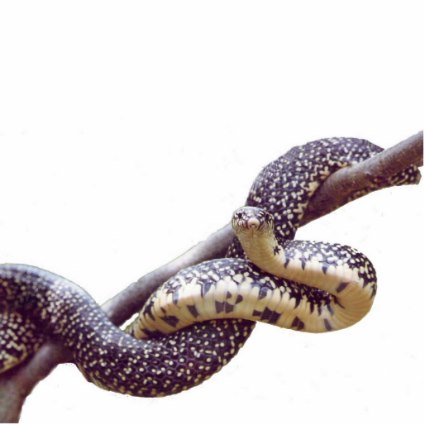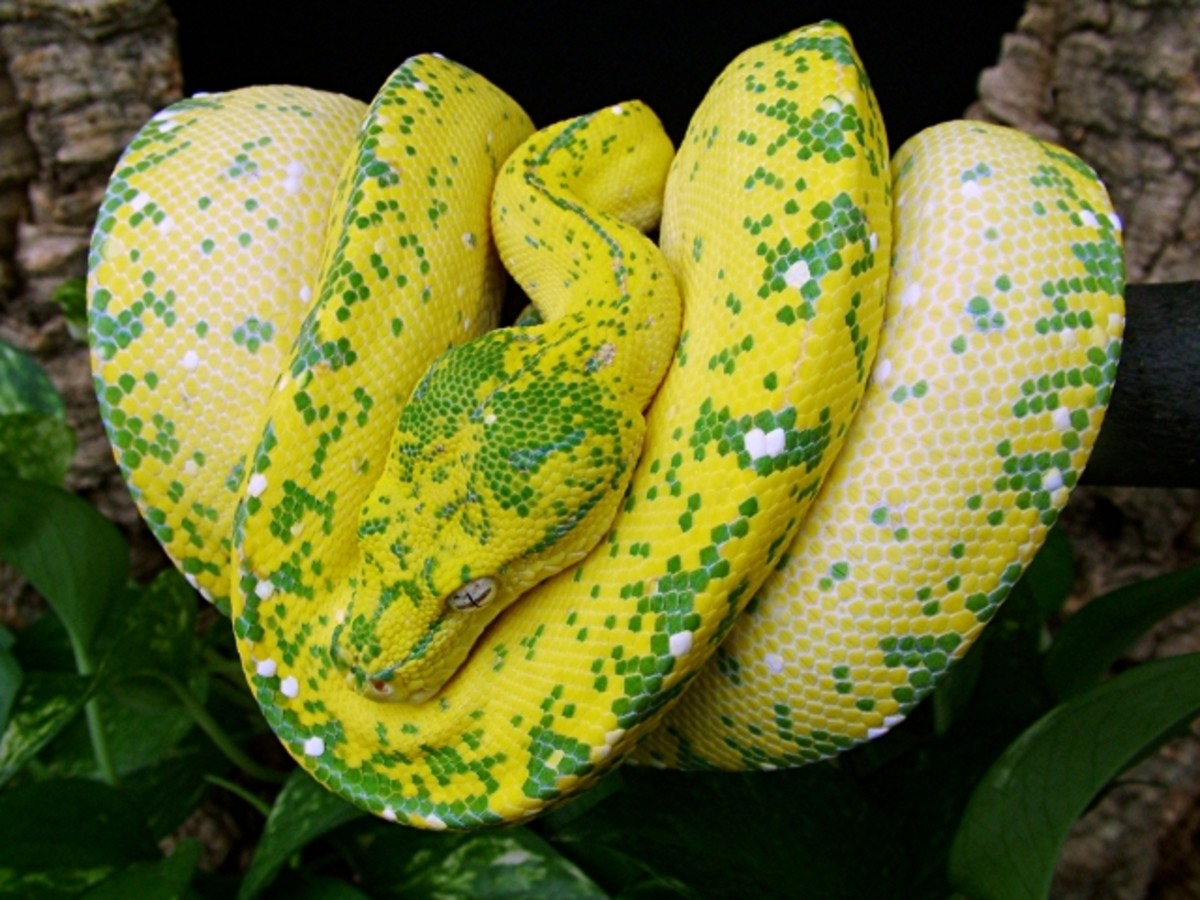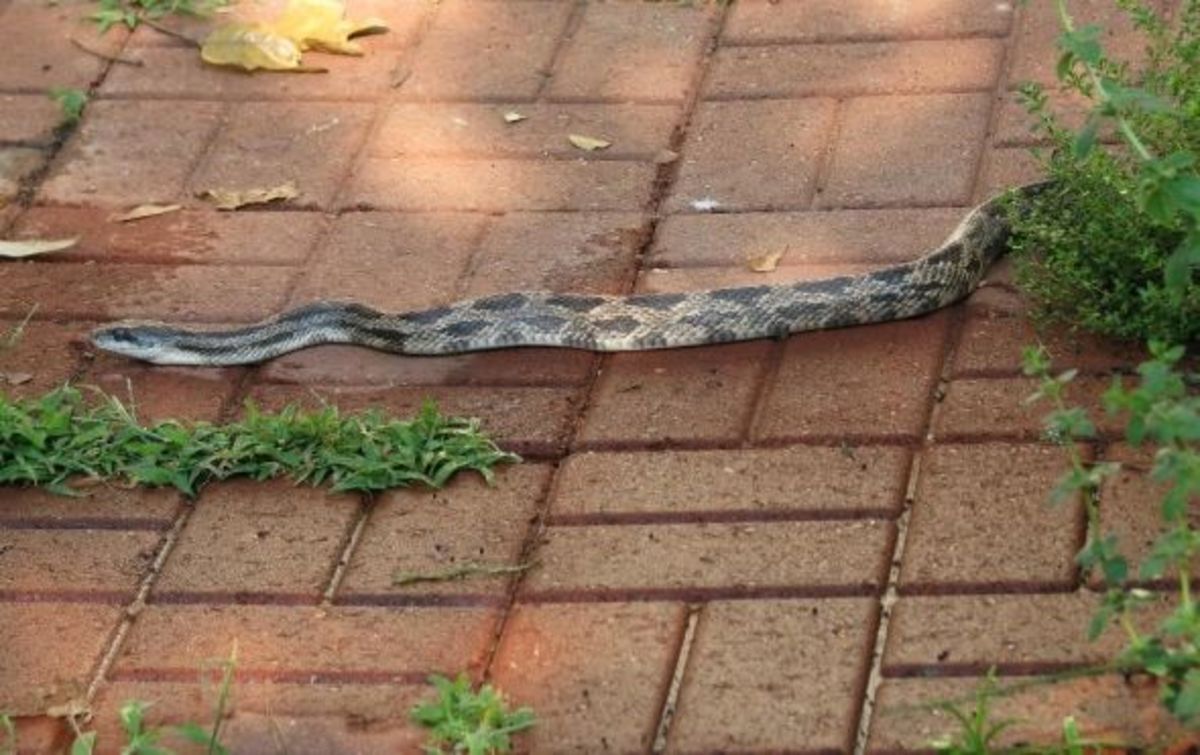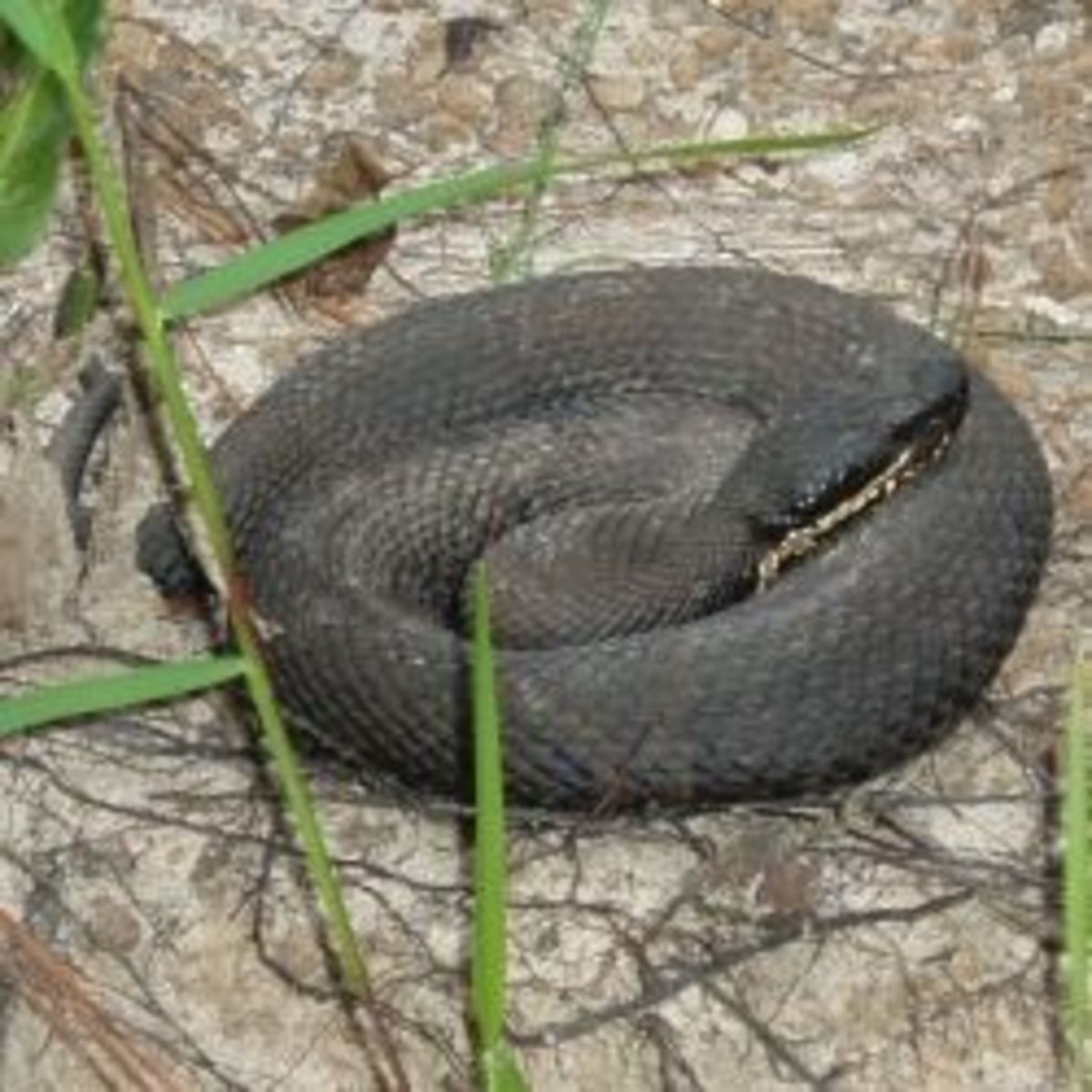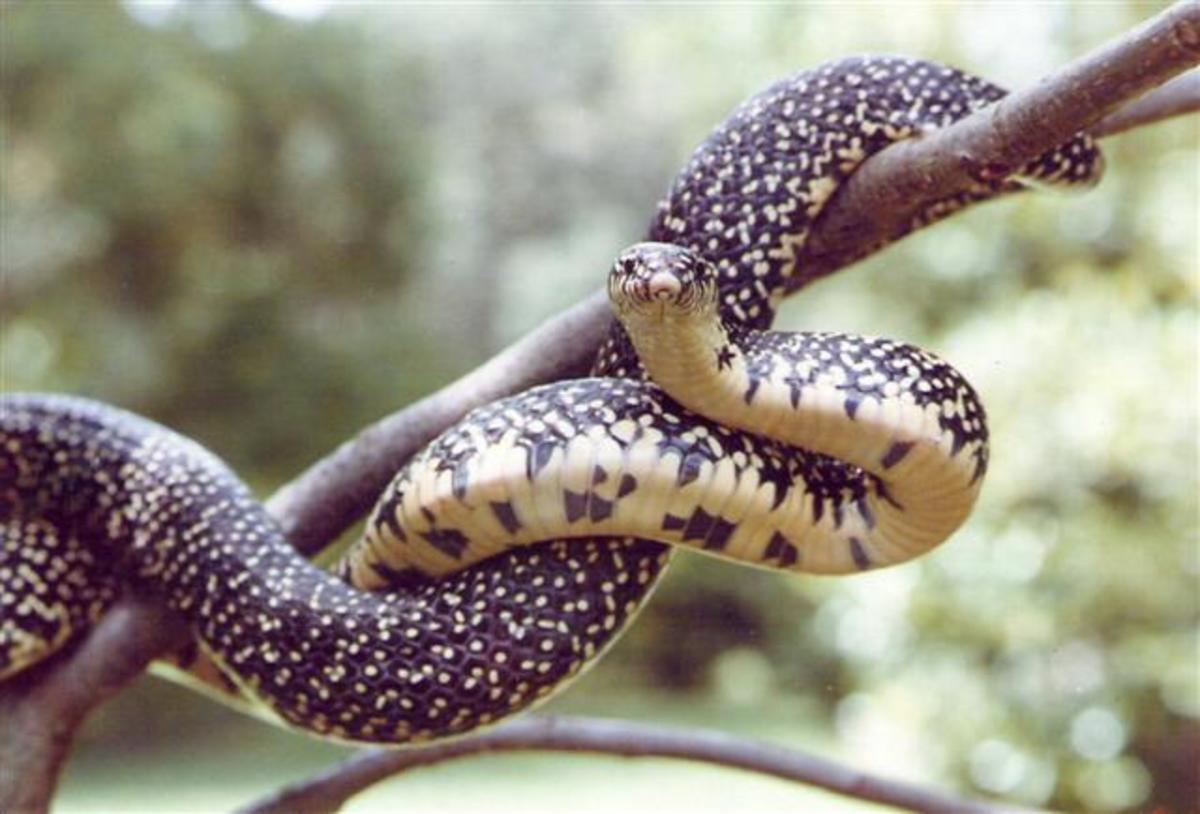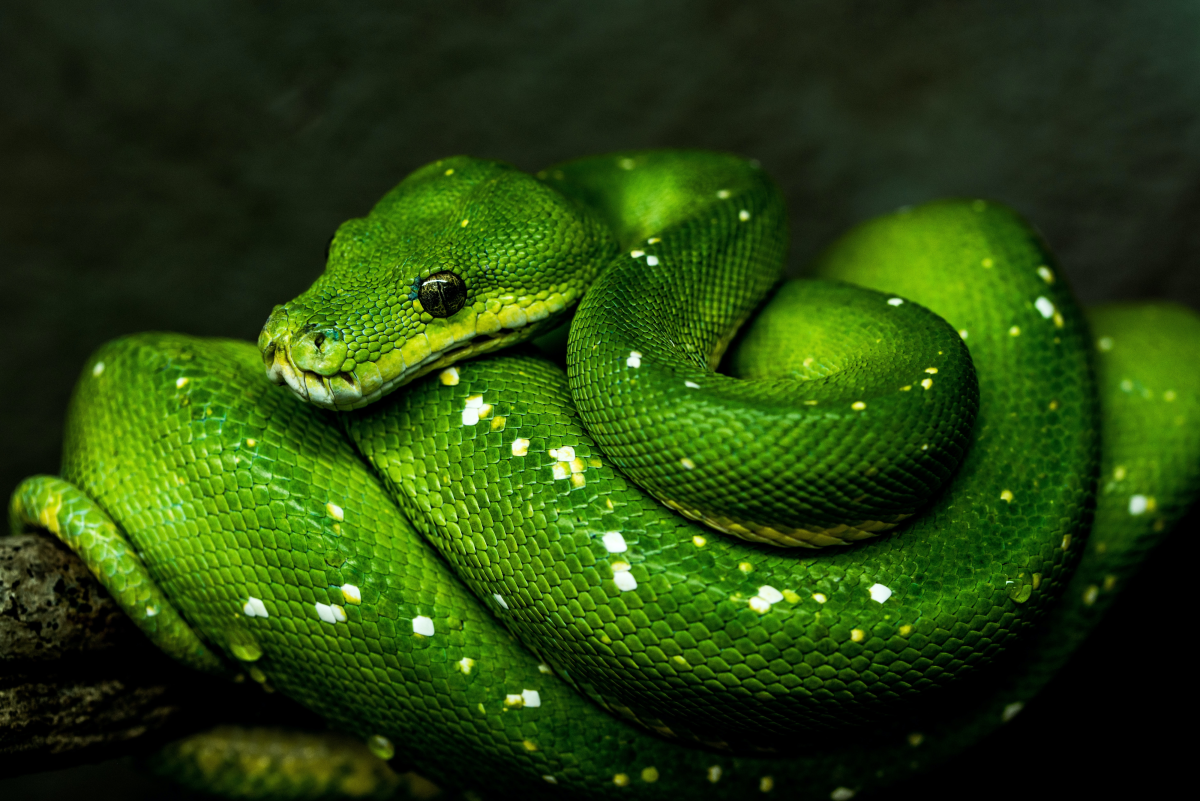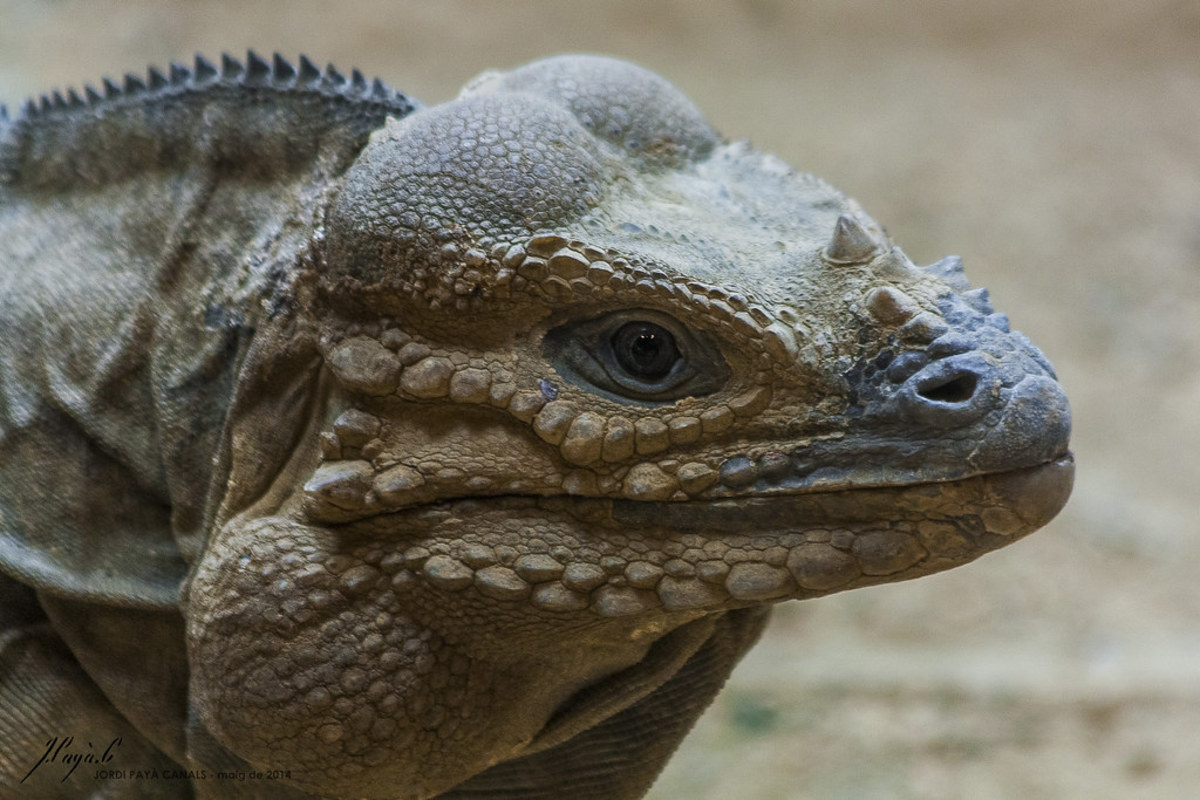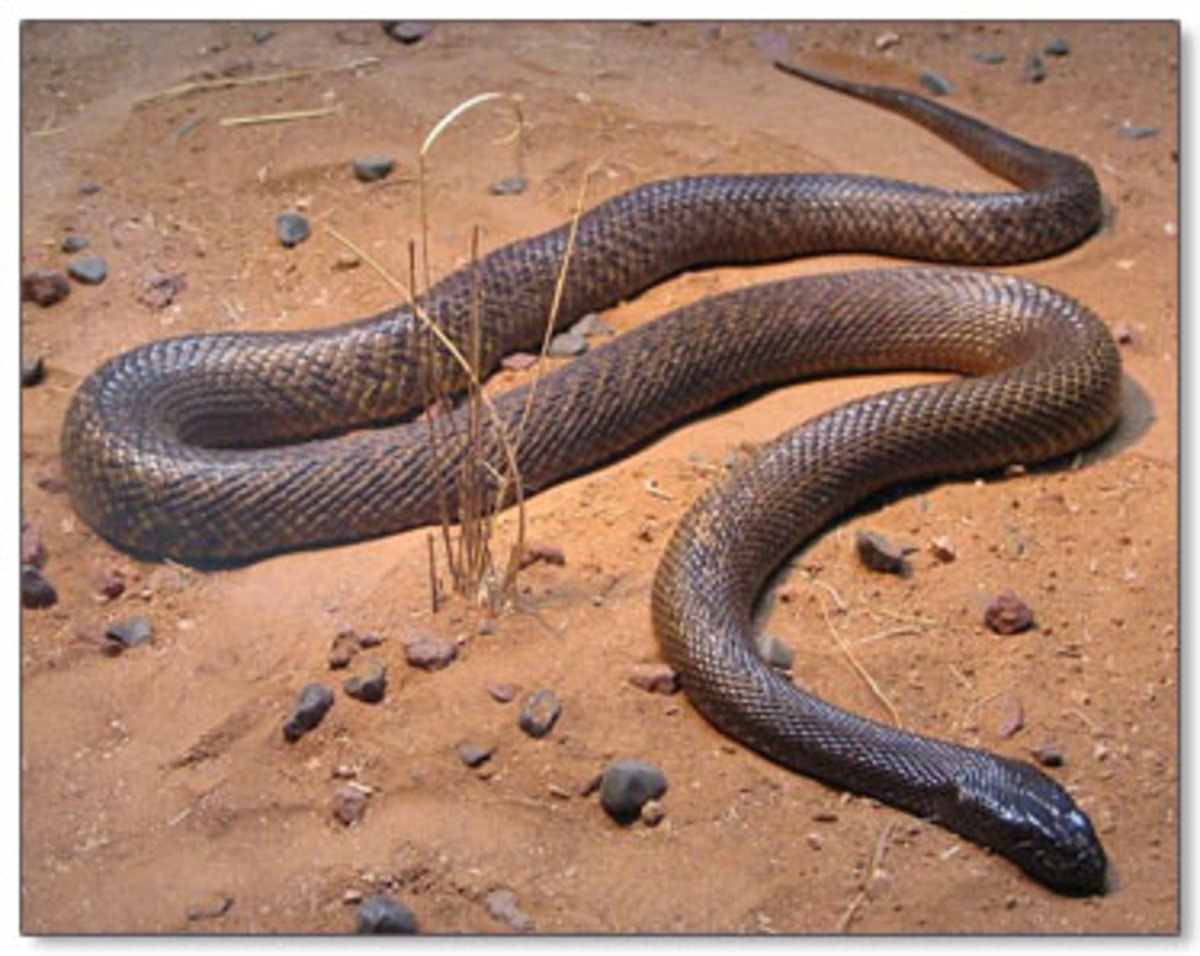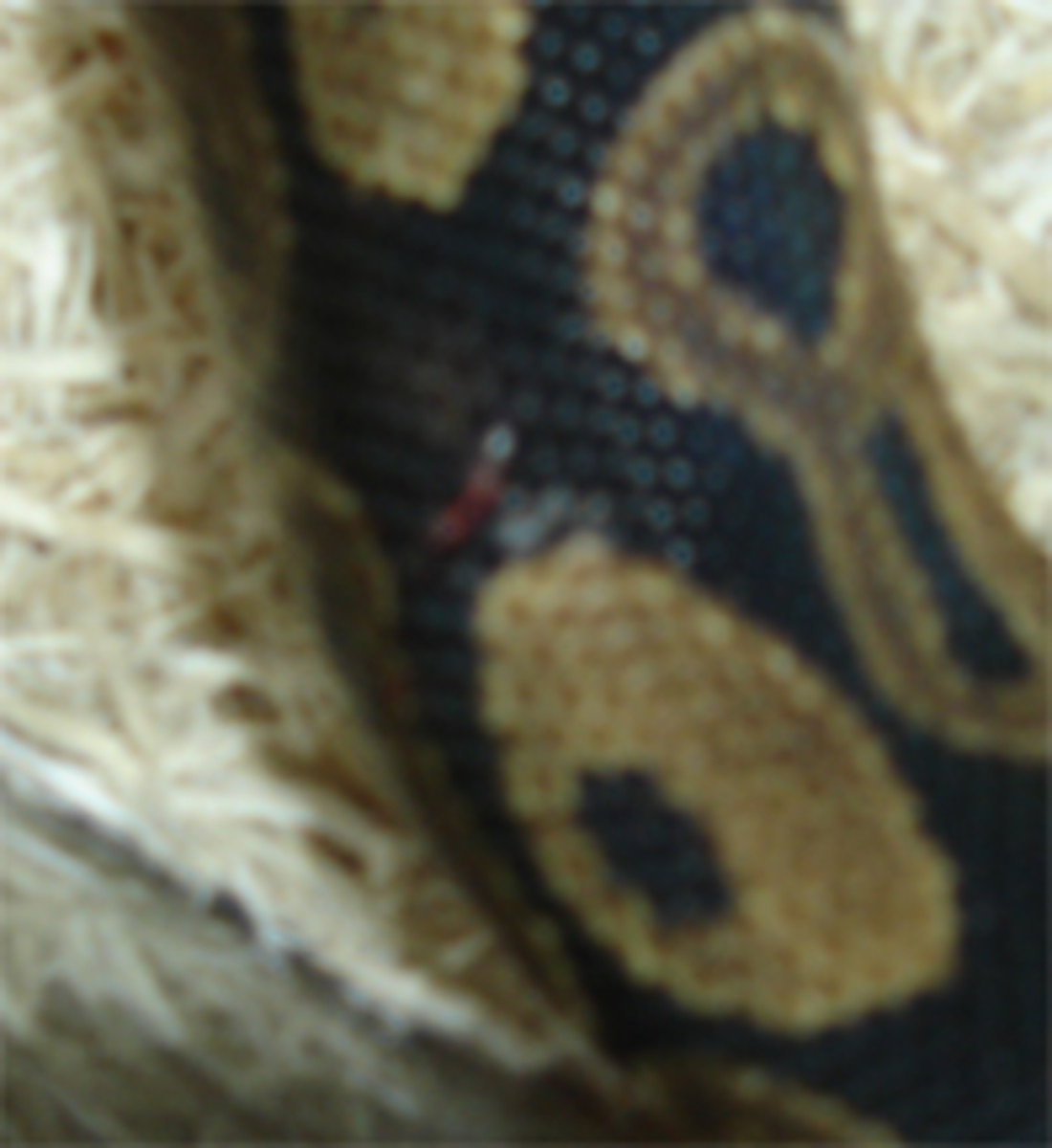Hognose Snake in Louisiana
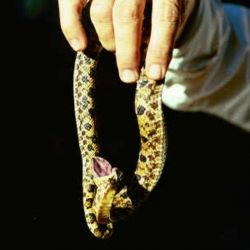
Reptile: Eastern Hognose Snake Heterodon (platyrhinos Latreille)
The Eastern Hognose Snake is a most unusual reptile with some very unique defense mechanisms, including puffing up like a cobra and playing dead when it is threatened. Although it is considered non-poisonous, in that it does not have fangs, it's saliva sometimes causes allergic reactions in some people if it comes in contact with broken skin. This is another of the interesting and colorful snakes of Louisiana.
Hognose Snake photo copyright Al & Yvonne BordelonThe Hognose Snake has Some Unique Defense Mechanisms
Identification of Hognose Snake
A non-poisonous snake of medium to moderately long size (to 45 inches) with a heavy body and an upturned snout. Hognose snakes have a variable dorsal pattern, occasionally uniformly black but more often consisting of large dark spots on a lighter ground color; the underside of the tail usually lighter than the belly.
Hognose snakes are found all over Louisiana but are rare or absent in the eastern Marsh.
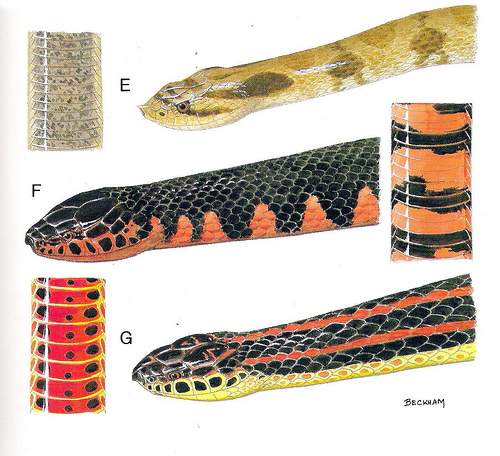
E. Eastern Hognose snake, Heterodon platyrhinos
F. Mud snake, Farancia abacura
G. Rainbow snake, Farancia erytrogramma
Photo reference: Dundee and Rossman, The Amphibians and Reptiles of Louisiana
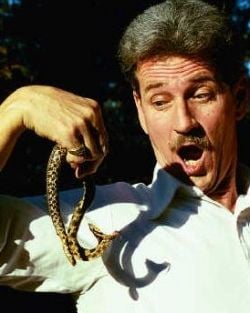
Habits and Habitat
These snakes occur in a wide variety of habitats in Louisiana, but are more abundant in some what dry, upland situations.
The Hognose snake has an unusual defense mechanism. When disturbed, its first line of defense is to flatten its neck to spread out almost like a cobra-like hood and it will hiss loudly. Because of this behavior it has been called spreading adder or puff adder. Even though it has a ferocious appearance, it will rarely bite. If the predator is not discouraged, then the snake will roll over on its back, writhe around with its mouth open and its tongue hanging out and finally lie still. If the snake is turned over, it will immediately roll over on its back again.
The saliva is mildly venomous and sometimes causes an allergic reaction on the rare occasions when someone is bitten.
Snakes of the Southeast
Hognose Diet
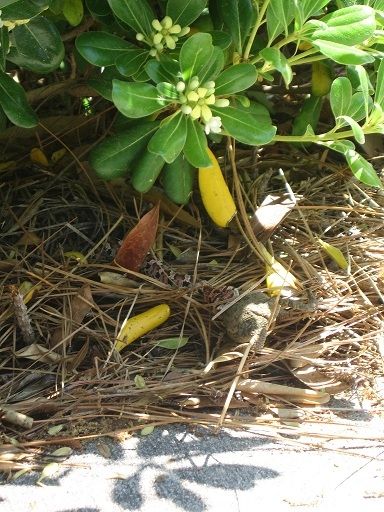
In the photo you can see the puffing up defense mechanism that the toad uses, but the hog-nose snake has 2 big back teeth that deflates the toad, so that it can be swallowed.
Hog-nose Snake Eating Toad with permission of jcsanders21 on Flickr
Click on the photo for a larger view. There are 2 other shots there.
Common Toad
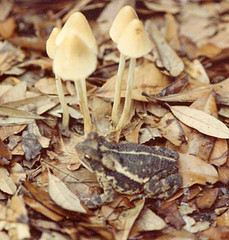
Toads are its primary food item, but it will also eat frogs and salamanders. The upturned snout appears to be an adaption for digging toads out of sandy soil. There have also been reports of wild-caught specimens eating small mud turtles, lizards, small snakes, birds and small mammals as well as some invertebrate prey.
Eastern Hognose snakes use their enlarged back teeth to deflate toads that inflate their bodies as a defense mechanism, thus making them easier to swallow. The toxin contained in the skin of toads is neutralized by enzymes in the Hognose snake's digestive system. We have observed Hognose snakes eating caged canaries that we raised. We captured the snake and released it into the woods a few miles away.
Hognose Snakes Book
Dark Phase of Hognose
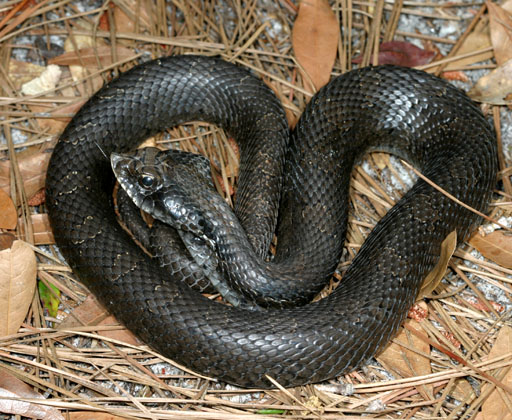
Reproduction
Dark phase of Hognose Snake, Heterodon platirhinos (Creative Commons License)
Hognose snakes are egg layers. Mating begins as early as mid April with egg laying in early June or as late as October 1. Clutch sizes range from 9 to 25 eggs in Louisiana and are laid under rocks or in loose soil. Most Hognose snake babies hatch in July, 6-7 weeks after the eggs are laid, and average about 200 mm in total length.
Kingsnake Skateboard
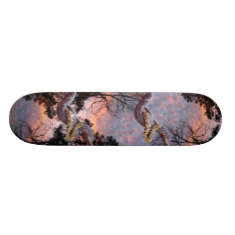
Snakes on Zazzle
Diamond-back Water Snake Stickers
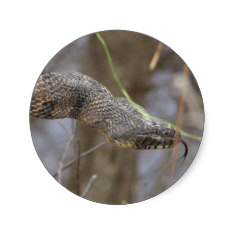
Cottonmouth Postage Stamp
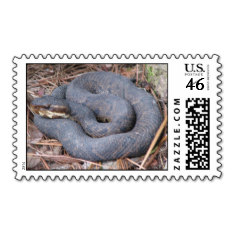
Immature Black Racer Poster
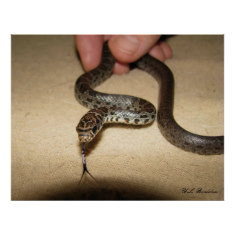
Hognose Snake Video
Links to More Louisiana Snakes
- Snakes of Louisiana
Snakes are an important link in the food chain. Here you will find many photos of venomous and non-venomous Louisiana snakes as well as information and links to most. - Diamond-back Water Snake
Diamond-back water snake is a non-venonmous reptile which is common in the rivers and water ways of the Southern U.S. Here you'll find photographs and information about this attractive large reptile. - Kingsnakes of Louisiana
Kingsnakes are beautiful, beneficial non-venomous snakes. They eat rats and other vermin. Here you will photos of and information about speckled, scarlet and prairie kingsnakes. - Ribbon and Garter Snakes
Ribbon and Garter snakes are small, non-venomous, mild-tempered reptiles that eat insects and small rodents. Here you'll find photos, information and books about these garden beneficial snakes.
Speckled King Snake Photo Sculpture
